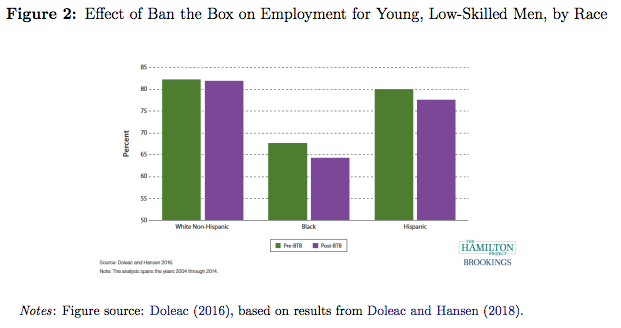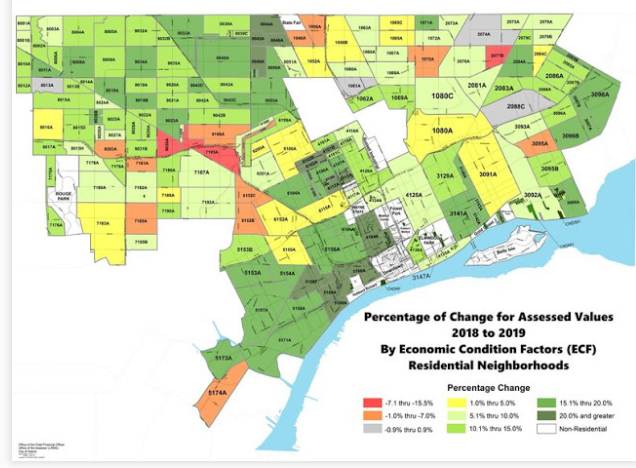What City Observatory did this week
1. The high cost of low house prices. We generally take low house prices as a sign that housing is affordable, but the reality isn’t that simple. In the case of cities and urban neighborhoods, low house prices may say a lot more about decline and dysfunction than about affordability. Houses, especially older ones, require continual maintenance–everything from paint, to a new roof, repairs to heating systems, plumbing and the like. Major repairs are no cheaper for low cost houses than high costs ones, and the low value of homes can be a major disincentive both to homeowners and landlords to spend money on maintenance. So in many circumstances, rising home prices are actually a positive sign for neighborhood health, signalling that residents and potential buyers put a higher value on living in the area; that in turn provides homeowners, landlords and developers with an incentive to maintain housing and prevent its decline.
2. To tell the truth. A critical ingredient in a sensible and informed policy decision is honesty and transparency by public servants. In testimony to the Oregon Transportation Commission, City Observatory Director Joe Cortright laid out a list of suppressed data, concealed assumptions, hidden plans and calculated misstatements advanced by ODOT to sell the proposed half-billion dollar I-5 Rose Quarter freeway widening project. While second-guessing technical details may be beyond the powers of this citizen commission, they are in a position to insist that the department’s staff provide information in an open and truthful way.
3. You can’t judge housing affordability without knowing transportation costs. Sprawling cities like Houston like to tout their relatively low house prices as an indicator of affordability, but that leaves out a really important part of the equation: transportation costs. If you live in a place where you have to drive everywhere, and drive long distances, then some or all of the advantage of “cheap” housing is offset by higher costs for car payments and gasoline, not to mention the time lost in travel. In Houston, for example, our Sprawl Tax report shows that the average workers pays nearly $3,000 more per year for transportation than in the typical city. Instead of looking narrowly at rents or house prices, we should be looking broadly at housing and transportation. Let’s recast this as a discussion about “affordable living” rather than an incomplete and misleading discussion of affordable housing.
Must read
1. Jason Segedy, on Displacement by Decline. Akron Planning Director Jason Segedy has taken a close look at a recent University of Minnesota Study on neighborhood change, and comes away with some key messages. The report shows that more than 38 million Americans live in urban neighborhoods that have experienced an increased concentration of poverty since 2000, and that despite the headlines it generates, gentrification affects only a pitifully small fraction of poor neighborhoods. He argues that this report should:
serve as a wake-up-call to the many well-intentioned people in our region who worry so much about the potential downside of urban revitalization, that they are overlooking the far greater challenges of inter-generational poverty, uneven economic growth, disinvestment, abandonment, negative-net-growth urban sprawl, and pervasive and entrenched racial and economic segregation.
2. The renter voter hypothesis? Writing in The New York Times, Emily Badger suggests that the nation’s renters could turn out to be a formidable voting block in the 2020 presidential election. Already several democratic candidates have fashioned policy proposals to address rising rents. And in the 2016 election, renters skewed heavily toward the democratic candidate. Elizabeth Warren, Kamala Harris and Corey Booker have all advanced specific proposals to either provide financial aid to renters, encourage the construction of more rental housing or both. While homeowners have traditionally been much more likely than renters to turn out and vote on election day, these candidates may be signalling a shift in the electoral winds.
New Knowledge
Do “Ban the box” laws lessen discrimination? Its long been the case that a prior criminal conviction can have a devastating impact on the ability of a person to even successfully submit and application for a job which they might otherwise be qualified. To deter employers from peremptorily refusing to consider those with conviction records, many jurisdictions have enacted “Ban the Box” laws, which bar employers from asking job applicants to disclose a prior conviction in their employment application (in general, asking about a criminal conviction remains fair game in the interview process).
In theory, “Ban the Box” ought to give otherwise qualified applicants a chance to advance in the screening process. But how does it work in practice. Jennifer Doleac, one of hte nation’s leading criminal justice scholars recently testified to the House Committee on the Judiciary about what research tells us about “ban the box” laws. One concern is that employers may use other factors, including age, race and education to screen out candidates that they perceive as having a higher probability of having been convicted of a crime. Doleac’s review of the literature concludes:
Delaying information about job applicants’ criminal histories leads employers to statistically discriminate against groups that are more likely to have a recent conviction. This reduces employment for young, low-skilled, black men. This negative effect is driven by a reduction in employment for young, low-skilled, black men who don’t have criminal records.
There are a number of studies of the effects of Ban the Box. Doleac’s own work shows that it tends to be associated with a decrease in employment levels for Black and Hispanic youth. Her analysis looked at employment rates before (green) and after (purple) implementing Ban the Box laws. While there was essentially no effect on the employment rates of white, non-hispanic low-skilled men, employment rates declined post implementation for low-skilled Black and Hispanic Men.

Instead of Ban the Box laws, Doleac argues that we should create alternative pathways and credentials for those released from the correctional system to signal their job-readiness, and also take steps to clarify employer’s legal liability when hiring formerly incarcerated persons.
Jennifer L. Doleac, Empirical evidence on the effects of Ban the Box policies: The state of the literature in 2019, Testimony prepared for the U.S. House Committee on Oversight and Government Reform, Texas A&M University March 11, 2019
In the News
Baltimore Sun columnist Dan Rodricks cited City Observatory’s Young and Restless report in a column calling for the city to reduce its population decline by working to retain more college graduates.



